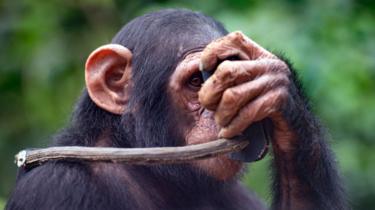Animals With Cameras:
Capturing the secrets of the wil

In the past year, you've probably seen more meerkats selling car insurance than you have in footage of the cute creatures in their natural habitat.
But that's about to change with the launch of Animals With Cameras - BBC One's latest nature documentary, which begins on Thursday.
For the three-part series, cameras were strapped to animals so scientists (and viewers) could monitor where they go and what they do.
And the results are fascinating.
"The technology is finally there to do it," series producer Dan Rees tells BBC News.
"Batteries are small enough. Lenses are small enough. You can get small enough sensors to give you a high definition image which can produce slow motion video.
"You can get [the cameras] onto an animal at the size it's comfortable for the animal to wear, that won't affect their behaviour."

Rees says the main benefit of such equipment is that it lets audiences into territory they won't have seen before.
"We can't go down into burrows, high into the air, deep under the sea - so it's a lot to do with access," he says.
BBC producers offered to share technology and footage with scientists who were already studying a particular species.
In most cases, the cameras were fitted by scientists who were already used to handling those animals. But a few animals had to be sedated in order to attach the cameras.
"Animal welfare was extremely important for us," Rees says. "The last thing we want to do is cause them distress. To follow an animal in the first place, there had to be a clear benefit in terms of knowledge about it that might be useful to protecting a species in the future.
"The scientists had to be comfortable that disruption was kept to a minimum."
Comments
Post a Comment